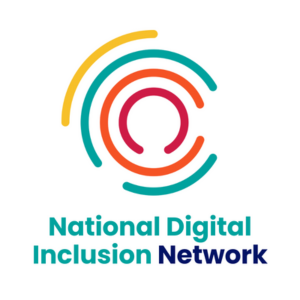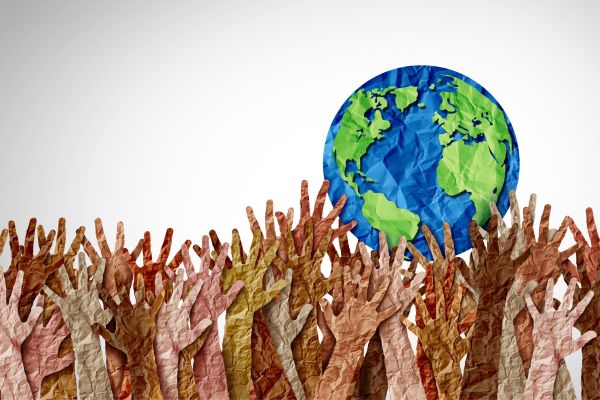Insights
INSIGHTS
All Topics
My Account
What does digital exclusion mean for the charity sector?
02 Jul 2020by Raabia Fazil
As digital tech enables access to vital services, what does digital exclusion mean for the charity sector?
With daily advances in innovation, digital tech has become embedded in daily life, from social media to banking, accessing health information and much more. As access to it can be uneven, what does digital exclusion mean for the charity sector?
Digital excluded people have limited or no access to digital tech and the internet, leading to lower skills and confidence. Being digitally excluded can lead to social exclusion and impact on social and economic problems. The ONS annual survey of internet users (2019) says that 9% of UK adults have either never accessed the internet, or over 3 months ago, affecting 4.8 million people. Digitally excluded people can include older people and people with lower educational achievements.
It goes beyond simply going online, however. 22% of UK adults, around 11.9m people, do not have the Essential Digital Skills required for everyday tasks, according to the 2019 Lloyds Consumer Digital Index.
The effect of the pandemic
Lockdown has made the situation starker. In the UK, lockdown has left 1.9 million homes without the internet and tens of millions of families more dependent on pay-as-you-go tariffs to get online healthcare, education and benefits and make phone calls. The digital exclusion of some of the UK’s most vulnerable families and communities is leading to harmful outcomes.
Helen Milner, the chief executive of Good Things Foundation, a charity combating digital exclusion, says “Pay-as-you-go customers without the means to buy data are finding themselves shut in their homes, facing social isolation with no means of communicating with the outside world.” In London, one woman revealed she was spending almost half of her weekly household budget on credit for her teenage daughters to access online homeschooling, her family eats only twice a day to balance living costs.
The problem affects elderly people, refugees and families living in poverty the worst as they cannot afford internet at home or fixed-term contracts. Jane Caldwell, the chief executive of Age UK East London says “We have elderly people who can’t get on council shielding lists because you have to register online. Others have ended up critically ill in hospital who have to beg to use a healthcare workers device just to make contact with their family”.
Bringing digital to everyone
Digital inclusion extends beyond broadband. It is important to empower people to have the fundamental skills needed to go online regularly and enthusiastically make it part of their lives.
The government has published The Skills Toolkit in collaboration with charities and academics to improve digital skills during this pandemic. It is designed to help people improve their tech skills as they adjust to working from home and helping children study at home, along with lifestyle essentials such as getting to online health resources and online banking. It also covers how to use new apps and Zoom.
Oliver Dowden, Secretary of State for Digital, Culture, Media and Sport said “Technology is going to play a hugely important role in our economic recovery and this new platform will help ensure everyone is able to improve their digital skills and take advantage of the opportunities ahead.”
Charities respond to the situation
The digitally excluded group of people generally contains people on low incomes, young people in care, homeless people and people with disabilities. Traditionally, charities would be supporting people in this category but have had to use digital to deliver their services during the pandemic instead of in person.
Charities are approaching the issue by ensuring digital tech is available to people who might otherwise struggle to get online. Many teachers in low-income neighbourhoods state that large numbers of their pupils cannot access tech for home learning. Education charity Teach First is urging internet providers to offer free Wi-Fi hotspots, lift data caps and install broadband in homes without it.
Mama Health and Poverty Partnership work with BAME African women and girls and are seeking to help people at risk of domestic violence. "We’re now trying to find funds to buy pay-as-you-go handsets with a bit of credit on them and hiding them in the food packages we’re dropping off so at least they have a way of calling someone if they are in trouble and need help," said the charity’s Rose Ssali.
One step further
Digital exclusion is being challenged by charities making digital tech itself more accessible. They are using innovative tools such as phone apps, video, chatbots and in-person drop-in centres to help ease nervousness in using tech. Mencap’s friendly chatbot, Aeren, directs people with mental disabilities to legal advice and supplies information for their users and supporters.
Digital exclusion can also reflect social norms and existing prejudice. This episode of the Charity Digital Podcast outlines inclusion, diversity and equality in the charity sector.
More on this topic
Recommended Products
Recommended Products
Our Events
Charity Digital Academy
Our courses aim, in just three hours, to enhance soft skills and hard skills, boost your knowledge of finance and artificial intelligence, and supercharge your digital capabilities. Check out some of the incredible options by clicking here.



















